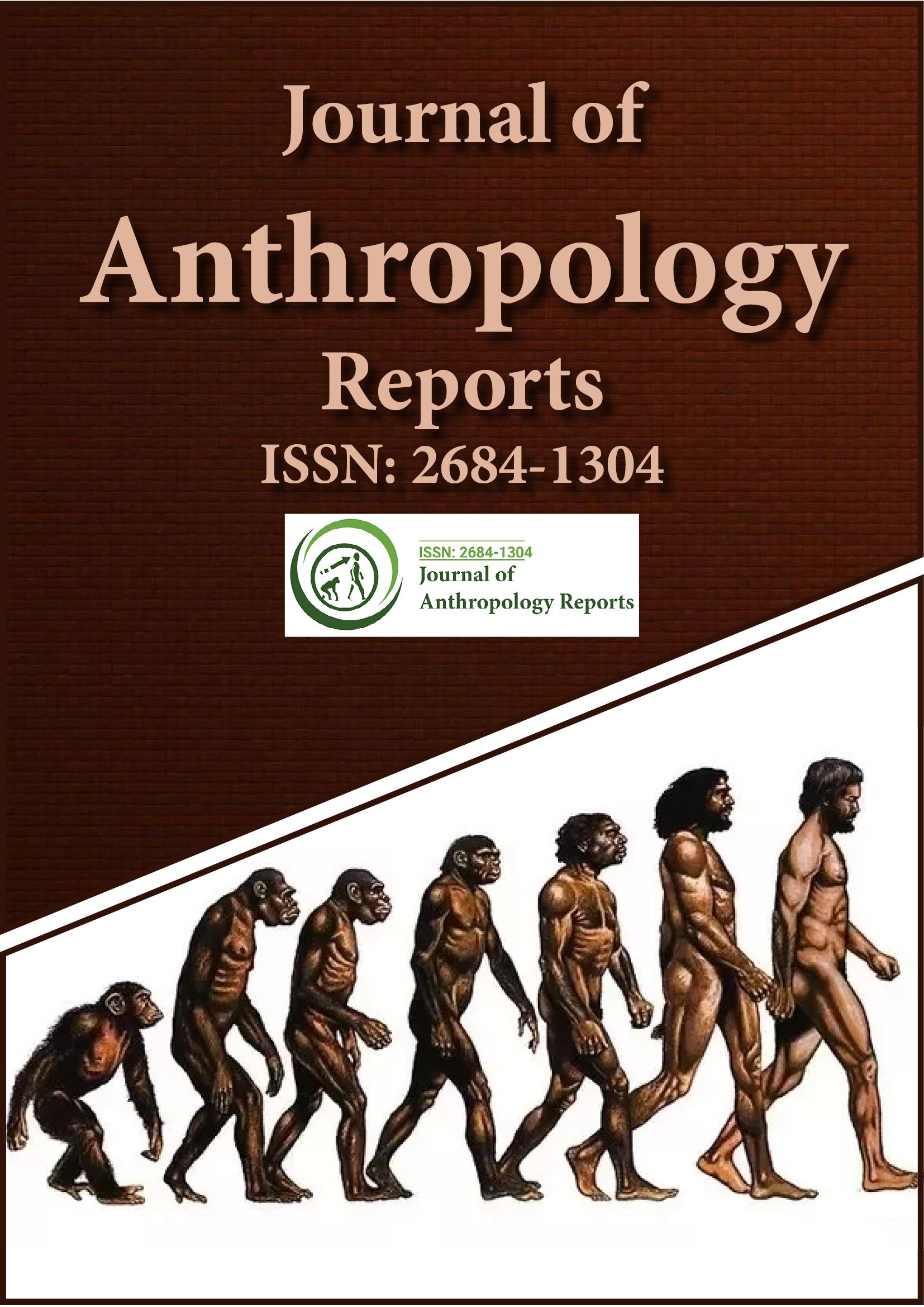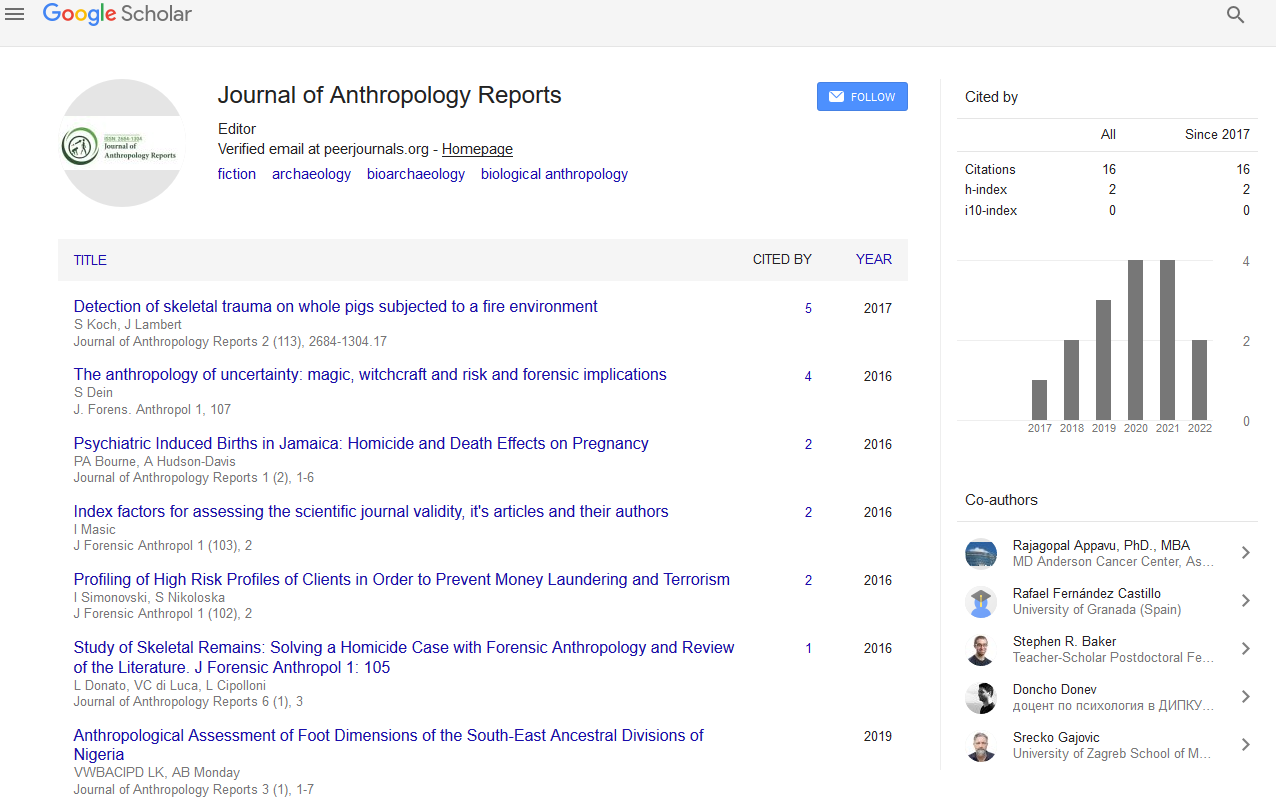Indexed In
- RefSeek
- Hamdard University
- EBSCO A-Z
Useful Links
Share This Page
Journal Flyer

Open Access Journals
- Agri and Aquaculture
- Biochemistry
- Bioinformatics & Systems Biology
- Business & Management
- Chemistry
- Clinical Sciences
- Engineering
- Food & Nutrition
- General Science
- Genetics & Molecular Biology
- Immunology & Microbiology
- Medical Sciences
- Neuroscience & Psychology
- Nursing & Health Care
- Pharmaceutical Sciences
Commentary - (2022) Volume 5, Issue 6
The Discovery of Fossils and Its Significance in Animal Life
Helen Brooks*Received: 07-Nov-2022, Manuscript No. JFA-22-18979; Editor assigned: 09-Nov-2022, Pre QC No. JFA-22-18979 (PQ); Reviewed: 25-Nov-2022, QC No. JFA-22-18979; Revised: 01-Dec-2022, Manuscript No. JFA-22-18979 (R); Published: 08-Dec-2022, DOI: 10.35248/2684-1304.22.5.143
Description
An animal or plant from a previous geological era which has been retained in the Earth's crust as a fossil, residue, impression, or trace The greatest source of knowledge regarding the evolution of life on this planet is the complex of information preserved in fossils found all across the world. Few extinct species are preserved as fossils; sometimes, only those with robust skeletons are able to do so. Leaves, feathers, shells, bones and shells can all turn into fossils there is indeed a great variety in size in fossils. A microscope is forced to display microfossils. Microfossils include pollen and bacteria. There is a great variety in size in fossils. Among microfossils are microorganisms and pollen. Macrofossils can weight several tones and have lengths of several meters. Bones from dinosaurs or petrified trees are two examples of macrofossils. When preserved remains reach an age of roughly 10,000 years, they turn into fossils. While these organic tissues may be preserved in a shell or bone that's also buried soon after deposition, they eventually get petrified.
Sedimentary rocks, some of which are quite old, frequently contain unaltered hard pieces, such as the shells of clams or brachiopods. However, throughout their transformation into solid rock, the hard sections of creatures that are buried in silt may be exposed to a number of additional modifications. Per mineralization is the process of fossilizing the remains by filling the pores or interstices of the shell or skeleton with calcium carbonate or other inorganic salts. With one layer of rock, the part undergoes a chemical reduction that results in a carbon film, while on the opposite layer of the rock, the part leaves an impression. Microfossils are fossils of both hard and soft components that are too little to be seen with the naked eye. Despite the absence of all plant and animal parts, some fossils nevertheless include signs of an organism's activities. These remnants of creatures are appropriately referred to as "trace fossils" and they consist of tracks or trails, fossilized excrement and borings. At least four distinct purposes have benefited from the knowledge that has been collected through studying the fossil record an animal group's development can be characterized by the gradual changes seen within that group.
The geologist can quickly and easily determine the relative age of the strata in which fossils are found by using fossils. The nature and quantity of the fauna will determine the level of precision that may be achieved in any given situation. Some fossil groupings were deposited over significantly longer time periods than others. Index fossils are fossils that are used to show geologic relationships. Paleontologists, geologists, as well as other scientists go through a rigorous excavations and documenting process when collecting fossils. The process of removing the specimen from the rock requires laborious labeling and recording of each component's location within the rock.
The excavation of fossils from the rock is done slowly and carefully, with strategies used to avoid or reduce specimen damage these fossils frequently end up in university or museum collections Body fragments and signs of a body Shells, teeth and bones make up body fossils. Dinosaur body fossil collections make up the majority of the fossil record. Trace fossils are rocks that still contain remnants of biological activity. They are not petrified remains; they are just the remains of organisms. An old petal or paw imprint is a trace fossil. Burrows can also leave trace fossils by leaving impressions in mud or soft rocks. However, many other fossils are gathered by amateurs and businesses. Such specimens are frequently not properly recorded or excavated, which leads to the loss of site data and runs the risk of damaging the specimen. The commercialization of fossils is debatable among academic paleontologists for these reasons as well as the fact that it encourages nonscientific collection. They can discover when and how various animals existed millions of years by studying fossils. Fossils can sometimes show researchers how the Planet has changed over time. In Nepal's Himalayan mountain range, the tallest peak range in the globe, ammonite fossils of extinct marine species have been discovered. Scientists can gather from this that the rocks that eventually formed the Himalayas were at the ocean's bottom millions of years ago.
Citation: Brooks H (2022) The Discovery of Fossils and its Significance in Animal Life. J Anthropol Rep. 5:143.
Copyright: © 2022 Brooks H. This is an open-access article distributed under the terms of the Creative Commons Attribution License, which permits unrestricted use, distribution, and reproduction in any medium, provided the original author and source are credited.

